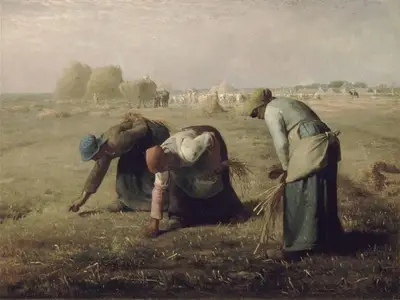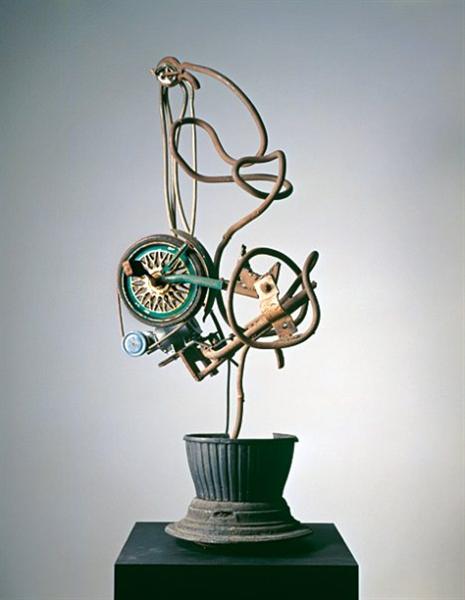Title of Artwork: “The Gleaners”

Artwork by Jean-Francois Millet
Year Created 1857
Summary of The Gleaners
Oil painting by Jean-François Millet, “The Gleaners” (Des glaneuses), created in 1857.
The Gleaners is by far Millet’s most well-known painting, showing a trio of people gathering the remains of a field’s wheat. According to Millet, the subject of women gathering the last of the wheat is an age-old one that can be traced back to the Old Testament.
The painting was met with scepticism by the people. It depicted the lower echelons of society, who were taking advantage of a centuries-old entitlement to scavenge the remaining grains of wheat from the harvest, in a sympathetic light.
It wasn’t until after the artist’s death that this picture became more widely known, as it had received nothing but scorn from the French upper class, which was concerned that it glorified the lower classes.
All About The Gleaners by Jean-Francois Millet
Three peasant women are shown in the painting sifting through a field of leftover wheat after the harvest. The upper classes in France were horrified by the artwork because it depicted the poorest members of rural society in a sympathetic light.
Before Millet’s The Gleaners, he painted a vertical version of the subject matter in 1854 and etched a similar piece in 1855 for publication. 1857 saw the debut of Millet’s The Gleaners in the Salon.
In the eyes of the middle and upper classes, it quickly evoked negative reactions: one art critic, representing for the majority of Parisians, saw an ominous allusion to “the scaffolds of 1793” in it.
After the French Revolution of 1848, these wealthy classes viewed the artwork as praising the lower-class worker. When they saw this, it brought up memories for them about how French society was built on workers’ labour and how landlords linked this working class to the rise of Socialism.
Those in the higher classes were put on edge by The Gleaners’ portrayal of the working class. Workers outnumbered the upper class by a large margin.
This meant that if the lower class revolted, the higher class would be overthrown. This artwork was not well received by the higher classes, who were still haunted by the events of the French Revolution.
Millet’s The Gleaners, which measures 33 inches by 44 inches, or 84 by 112 centimetres, was likewise poorly received because of its size.
This is a major accomplishment for a work of art showing labour. Paintings in religious or mythological themes typically used canvases of this size.
He did not show anything religious or mythological in his art, and he did not make any reference to that in his work. The painting depicted poverty and the working class in a realistic light.
Criticism of “his three gleaners have giant pretensions, they posture as the Three Fates of Poverty…their ugly and grossness unrelieved” Even though gleaning has been depicted before, this new piece was a remark on rural poverty and not Biblical piety: there is no Biblical sense of solidarity and compassion in the opposing images of grinding poverty and the bright expanse beyond.
He sold his piece for 3,000 francs—below the $4,000 asking price—after wrangling with an Englishman named Binder, who refused to accept Millet’s measly counter-offer; Millet tried to keep the price under wraps.’
He received little attention during his lifetime for The Gleaners, but after his death in 1875, the public began to appreciate his work.
The picture, which was held by banker Ferdinand Bischoffsheim at the time, was sold at auction in 1889 for 300,000 francs. Rumors circulated that the picture had been purchased by an American collector.
After less than a week, it was announced that Champagne giant Jeanne-Alexandrine Louise Pommery had purchased the piece, which put an end to rumours about her financial difficulties after she left her grapes on the vines longer than her competitors.
Information Citations
En.wikipedia.org, https://en.wikipedia.org/.























